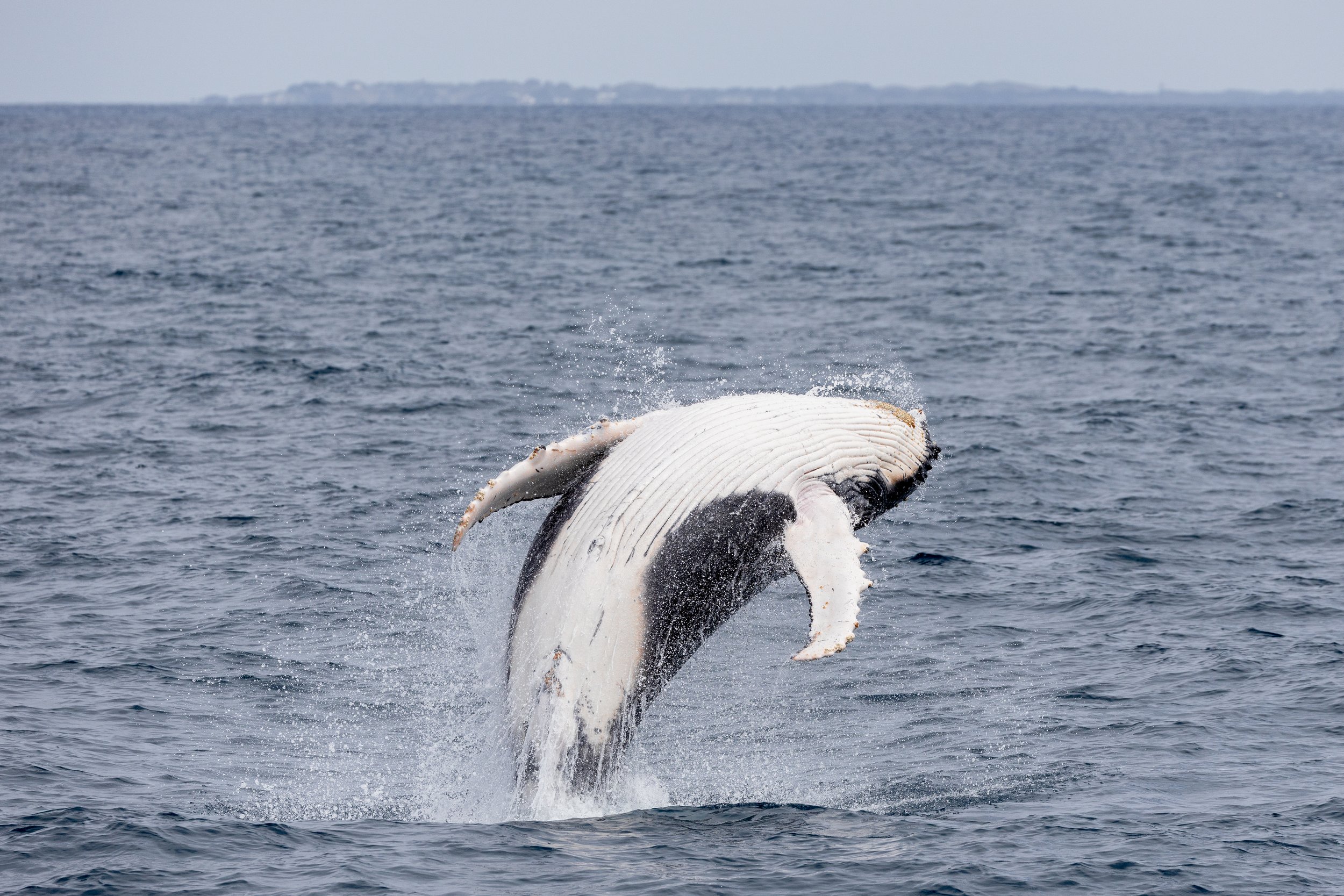Exploring the Different Whale Species You Can Spot in Australia
Australia is renowned for its whale-watching opportunities, thanks to its extensive coastline and seasonal migrations of various whale species. From the acrobatic humpbacks to the elusive blue whales, each encounter offers a glimpse into the magnificent world of marine giants. Here’s a guide to the most common whale species you can spot in Australia and the best places to see them:
Humpback Whale
Where to See Them: Queensland (Hervey Bay), New South Wales (Byron Bay), Western Australia (Broome, Ningaloo Reef, Perth)
Best Time: May to November
Humpback whales are known for their impressive acrobatic displays and large, distinctive tail flukes. Each year, they migrate from Antarctic waters to the warmer Australian coastlines to breed and give birth. The warm, sheltered waters along the WA coast provide an ideal nursery for newborn calves before they make the long journey south again, offering visitors an opportunity to see mothers and calves close to shore.
Southern Right Whale
Where to See Them: Victoria (Warrnambool), South Australia (Victor Harbor), Tasmania (Great Oyster Bay)
Best Time: June to October
Southern right whales are easily recognised by their callosities (raised, white patches) and distinctive V-shaped blow. These gentle giants migrate to the southern coastlines of Australia, where they seek calm bays and sheltered waters to breed and nurse their young. Known for their slow swimming speed and frequent surface behaviour, they are ideal for shore-based viewing along Australia’s southern coastline, especially around Warrnambool and Victor Harbor.
Blue Whale
Where to See Them: Victoria (Portland), Western Australia (Geographe Bay), South Australia (Great Australian Bight)
Best Time: March to May
The blue whale, the largest animal on Earth, can occasionally be spotted in Australia’s waters, although sightings are rare and awe-inspiring. These gentle giants can reach lengths of up to 30 metres and are known for their striking blue-grey colour. Western Australia’s Geographe Bay is one of the few places in the world where blue whales are sometimes sighted, typically in deep waters as they feed on krill.
Orca (Killer Whale)
Where to See Them: Western Australia (Bremer Bay)
Best Time: January to April
Known for their striking black and white colouring and highly social behaviour, orcas are actually the largest members of the dolphin family. Bremer Bay Canyon in Western Australia is one of the world’s few locations where orcas are regularly sighted, often hunting in pods and displaying remarkable intelligence. Their arrival each season draws crowds eager to witness their dynamic group hunting tactics and interactions.
Minke Whale
Where to See Them: Queensland (Great Barrier Reef), New South Wales (Jervis Bay)
Best Time: June to August
Minke whales are smaller and sleeker than most other whale species, known for their curiosity towards boats, making them a favourite among divers and snorkellers. Commonly seen around the Great Barrier Reef, particularly near Ribbon Reefs, these friendly whales often approach boats, offering a unique up-close encounter. Their playful nature and agility make them a joy to observe in the wild.
Sperm Whale
Where to See Them: Tasmania (Eaglehawk Neck), South Australia (Kangaroo Island)
Best Time: November to April
Sperm whales are instantly recognisable by their block-shaped heads, which house the largest brain of any animal on Earth. Known for their impressive diving capabilities, they are capable of diving to depths of over 1,000 metres in search of squid. While sightings are rare, they can sometimes be spotted around Tasmania’s Eaglehawk Neck and Kangaroo Island, especially as they surface to breathe between dives.
Whale Shark
Where to See Them: Western Australia (Ningaloo Reef)
Best Time: March to August
Whale sharks, though not true whales, are gentle giants known for their massive size and filter-feeding habits. Ningaloo Reef in WA is one of the world’s best spots to swim alongside these docile creatures as they migrate to feed on plankton. Their presence near the surface and slow movements make them ideal for snorkellers and divers seeking a close-up experience with one of the ocean’s most iconic species.
Planning Your Whale Watching Experience
Many of Australia’s top whale-watching spots are accessible through well-organised local tours that operate seasonally and respect the natural behaviours and habitats of these marine giants. Whether you choose a land-based viewing platform or a boat tour, a knowledgeable guide can provide insights into the unique characteristics and behaviours of each species.
Whale Watching Perth offers unforgettable whale-watching experiences along Perth’s beautiful coastline. Specialising in humpback whale tours during their annual migration, we provide expertly guided trips with opportunities to see these spectacular creatures up close. Our team is dedicated to eco-friendly, responsible whale watching, ensuring an exceptional experience while respecting the natural environment.








